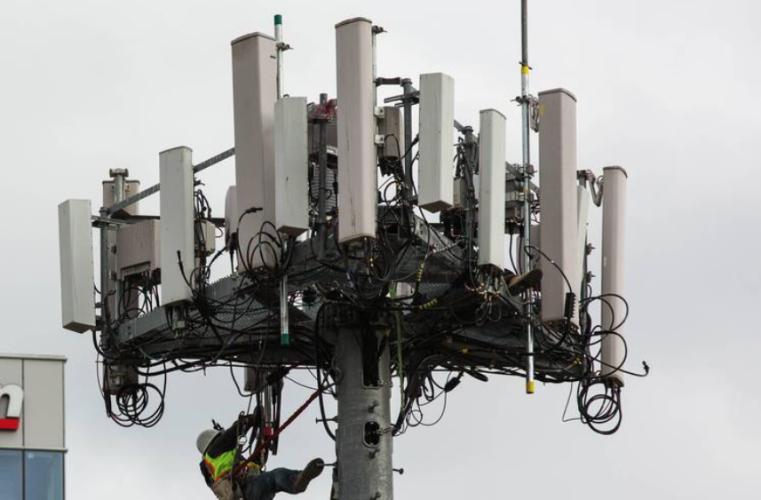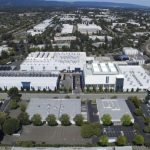America's Hottest Properties: Data Centers and Cell Towers

Landlords anticipate more tenant demand as growth in e-commerce soars
E-commerce has been blamed for the struggles of retail real estate, but is proving to be a boon for owners of data centers and cell towers.
As more people consume digital content and make purchases online, landlords and owners of data centers and cell towers that house cables and beam data to smartphones are looking to expand faster.
Cell-tower operator REIT Crown Castle International Corp. on July 18 said it is making a $7.1 billion acquisition of Lightower Fiber Networks, a purchase that would double its fiber-optic footprint and expand its reach to Northeast markets.

Data center owner and operator Digital Realty Trust Inc. said in June it would acquire competitor DuPont Fabros Technology Inc. in an all-stock deal valued at $7.6 billion. San Francisco-based Digital Realty said the transaction will strengthen its existing portfolio in Northern Virginia, Chicago and Silicon Valley.
The moves show how technology is creating numerous winners in real estate even as it disrupts traditional industries such as retailing. While mall owners face growing pressure from the rise of e-commerce, for example, the increase in web activity is fueling demand for wireless infrastructure and racks of telecommunication equipment that need to be stored somewhere.
“Technology innovation has impacted a lot of the real-estate asset classes. Just look at today versus five years ago,” said Andrew Power, chief financial officer of Digital Realty, who pointed to the disruption Airbnb Inc. has wrought on the hotel industry.
Information technology firms and cloud-service companies such as Amazon Inc. and Facebook are driving demand for data centers, while the growth of supply of data centers has been slow to catch up, he said.
All of that is being reflected in share prices. Total returns from data centers were 22% in the first half of this year, up from the 4.9% return of all equity REITs, according to data from the National Association of Real Estate Investment Trusts and the 8.8% return for the S&P 500-stock index.
Total returns from infrastructure REITs, which include cell towers, were 22% over the same period.
“Data centers are truly a growth real-estate sector. We’re all using these electronic file cabinets,” said Joel Beam, managing director and senior portfolio manager of real-estate strategies at asset management firm Salient Partners LP, which had increased its investments in data centers in recent months.
Houston-based Crown Castle is focused on providing infrastructure to lease to wireless carriers such as Verizon , AT&T and T-Mobile in urban areas. Its latest all-cash deal is its biggest to date.
Cell towers are the main platform of the digital economy, said Crown Castle Chief Executive Jay Brown. “It’s very similar to railroad tracks and toll roads,” he said.
Yet there are questions over how quickly advances in technology could shrink the amount of space necessary for storage and transmission of data, and whether there could be alternative uses for the highly specialized real estate. Data centers are typically windowless buildings with thick walls and other rigid infrastructure to protect from natural disasters. They are also huge consumers of power.
“You wonder if all this stuff could eventually be stored on the head of a pin. I’m not a tech expert,” Mr. Beam said.
Many real-estate investors say they typically go through a longer learning curve to understand the business of data centers and whether there are technology risks to this type of real estate.
Executives at these REITs said they are fielding more queries about the possibility that advances in technology could make them obsolete, how long leases typically are—around 10 to 15 years—and whether there are high barriers to entry.
“One of the biggest myths is that you can just set up a facility and expect customers to come,” said Gary Wojtaszek, chief executive of CyrusOne, a Dallas-based data center REIT. It takes time to build relationships with customers, he said, adding there are both build-to-suit and speculative construction of data centers.
Customer servers have been shrinking but there are more innovations and apps being created, data center landlords said.
“Data growth has been exponential and more than offset the efficiencies that the cloud has enabled,” said Laurel Durkay, associate portfolio manager of real-estate securities at asset manager Cohen & Steers. She expects data centers to see an annual growth in demand of 10% to 20% in the next five years.
“You’re not going to see a world where a data center will be replaced by an iPhone,” Digital Realty’s Mr. Power said.



